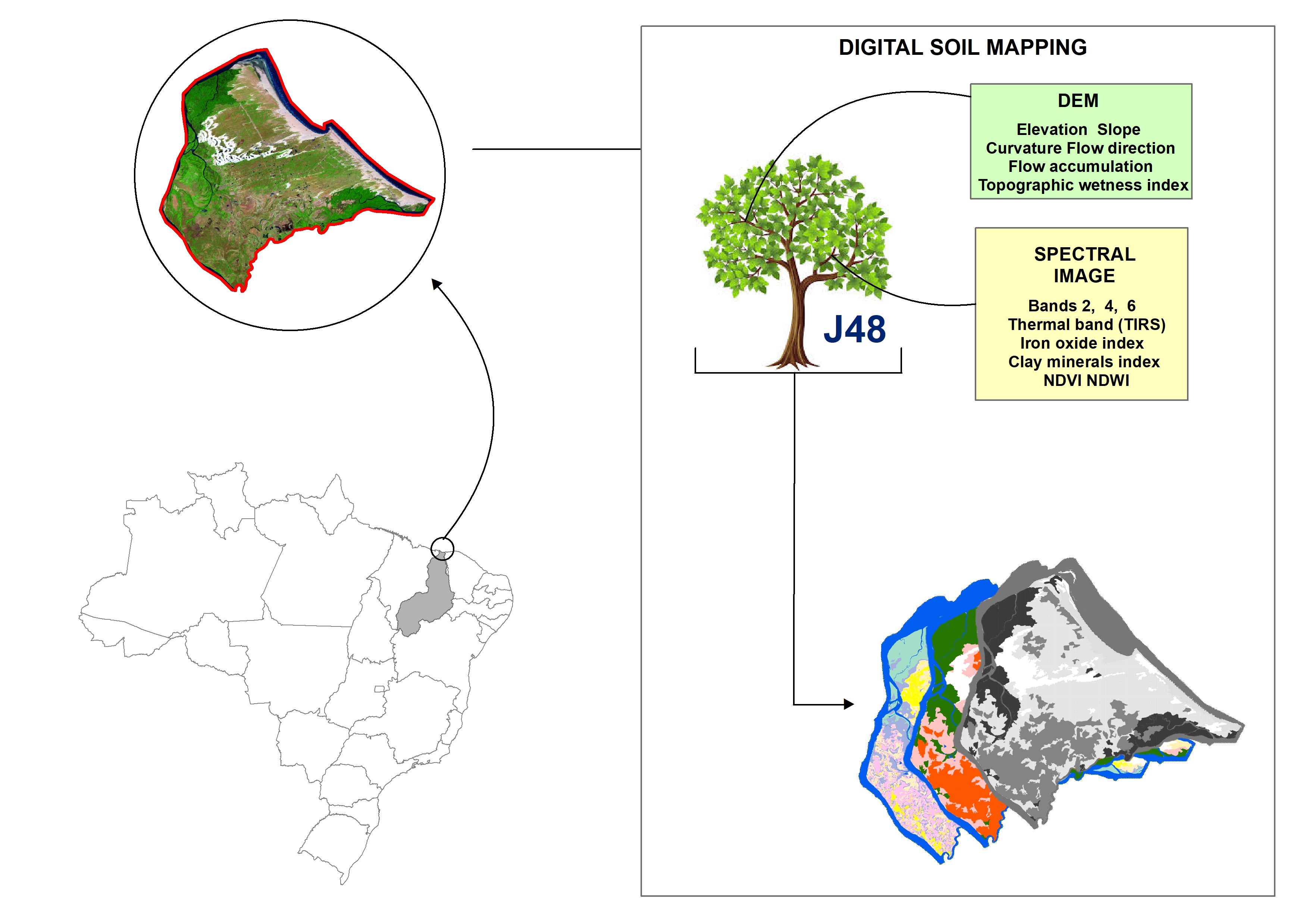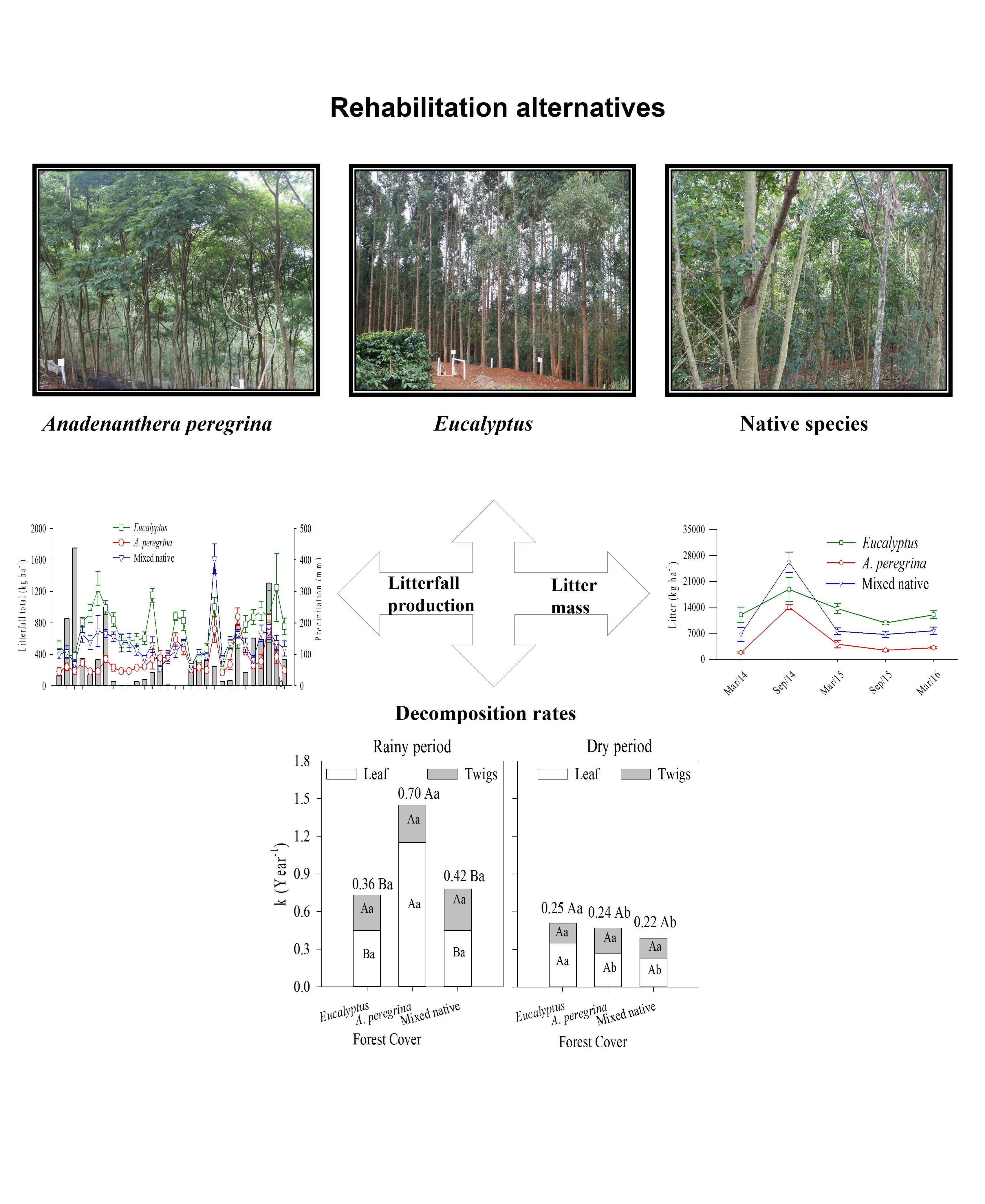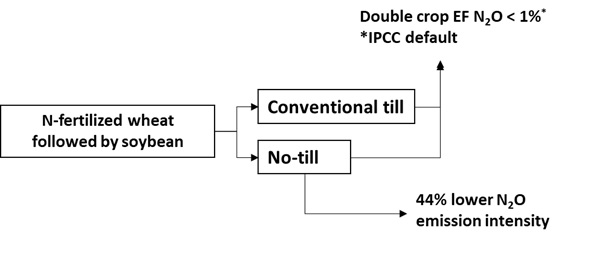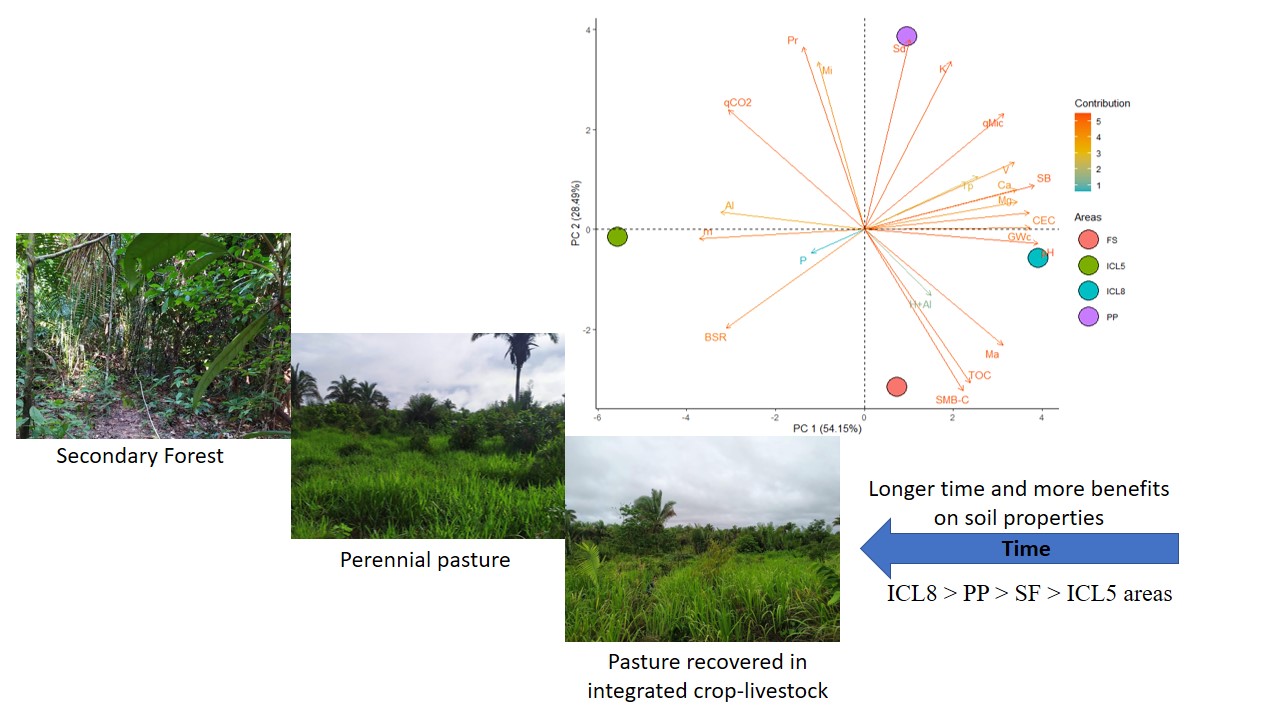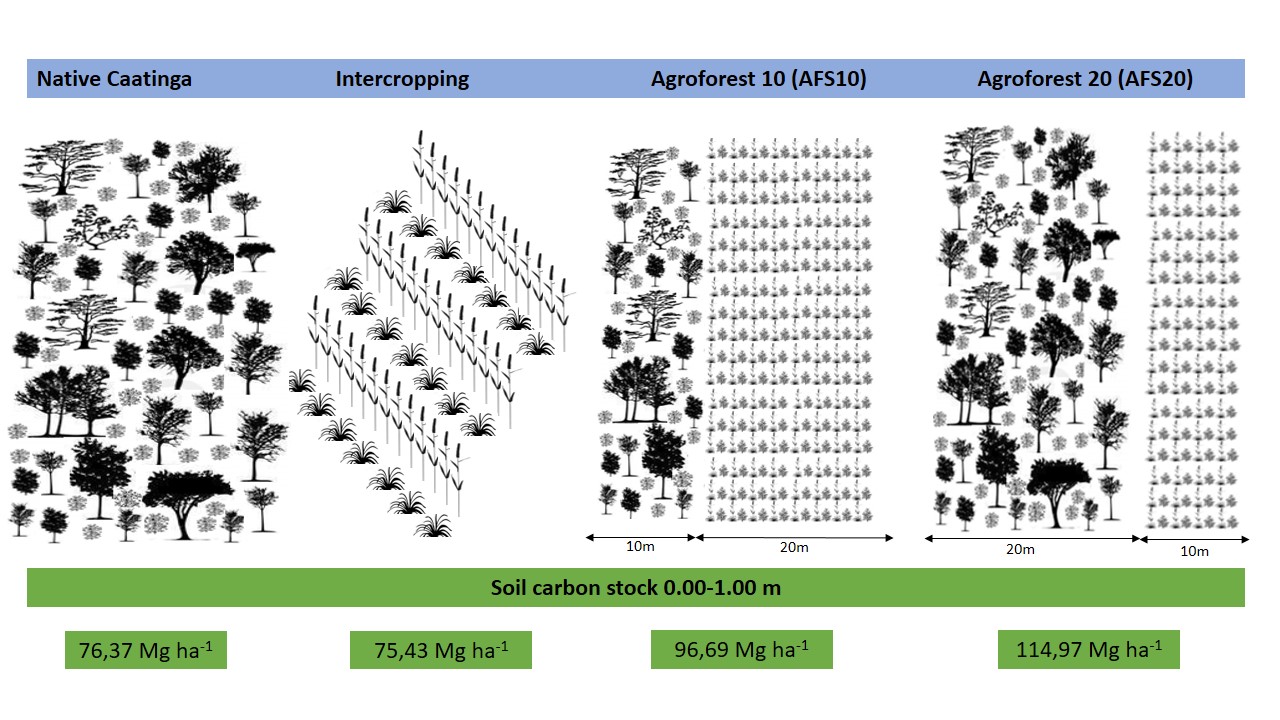Digital soil mapping for the Parnaíba River delta, Brazilian semiarid region
04/Apr/2023
ABSTRACT Soil mapping is a permanent demand, but the traditional method does not allow fast execution and low cost. Digital soil mapping (DSM) aims to improve the process by working with models that treat soil spatial variability quantitatively. In this perspective, the objective of the study is to perform DSM of the Parnaíba River Delta, Northeastern Brazil, through the decision tree (DT) integration technique using a set of attributes derived from the digital elevation model (DEM) and satellite images as […]
Litterfall production, decomposition and litter nutrient contents in a mined area revegetated with different forest species
29/Mar/2023
ABSTRACT Afforestation of sites disturbed after bauxite mining is the favorite technique to restore all ecosystem functions. The nature of the tree species used for revegetation of post-mining land can accelerate the recovery of soil organic matter and nutrient cycles. This study aimed to determine the litterfall production, decomposition rate and nutrient content from three types of forest cover ( Eucalyptus , Anadenanthera peregrina , mixed plantation of 16 native species) planted in a bauxite mining area in recovery. Litterfall […]
Soil nitrous oxide emissions from a soybean-wheat succession under different tillage systems in Southern Brazil
29/Mar/2023
ABSTRACT No-tillage (NT) has been largely adopted in Brazil as a strategy for soil conservation, but for the last decade, there have been governmental incentives for its adoption arising from its potential for soil C accumulation. Notwithstanding, the soil mulch formed from crop residues favors the maintenance of soil moisture and nutrients in the upper soil layers, which stimulates soil microbial activity and may increase the potential for nitrous oxide (N2O) emissions. In addition, double-cropping systems in the same year […]
Spatial multivariate optimization for a sampling redesign with a reduced sample size of soil chemical properties
22/Mar/2023
ABSTRACT Precision agriculture can improve the decision-making process in agricultural production, as it gathers, processes and analyzes spatial data, allowing, for example, specific fertilizer application in each location. One of the proposals to deal with spatial heterogeneity of the soil or the distribution of chemical properties is to define application zones (homogeneous subareas). These zones allow reducing both spatial variability of the yield of the crop under study and of the environmental impacts. Considering the soil data, application zones can […]
Soil solution and rice nutrition under liming and water management in a soil from Amazonian natural fields
22/Mar/2023
ABSTRACT Soils of natural grasslands in the Amazon region play an essential role in local food production and preservation of the Amazon rainforest. However, in general, these soils have high acidity, which limits irrigated rice production. The objective of this study was to evaluate the effect of liming and irrigation management on the dynamics of soil reduction, nutrients in the soil solution, nutrition, and aboveground plant biomass in natural fields soil in southern Amazonia, Brazil. The experiment evaluated the correction […]
Soil quality indicators for monitoring the short-term effects of mined soil rehabilitation strategies for bauxite
22/Mar/2023
ABSTRACT Mining is a significant driver of soil mobilization, which impacts its physical, chemical, and biological properties. Changes in land-use affect the distribution of organic matter fractions in stable aggregates, a process that is still poorly understood, especially in drastically altered areas. Recovering and monitoring soil quality to ensure the sustainable development of agricultural crops in these areas after mining is challenging. This study aimed to evaluate the influence of agronomic practices in soil rehabilitation in a bauxite-mined area after […]
Chemical, physical, and biological properties of soil with pastures recovered by integration crop-livestock system in Eastern Amazon
21/Mar/2023
ABSTRACT Soil quality can be understood as its capacity to provide several essential services within the ecosystem and has been used to understand the impact of different managements, providing information that proves the benefits and your maintenance of the agroecosystem. To understand the impact of different managements, this study aimed to compare the chemical, physical, and biological soil properties in pasture areas managed with different recovery times in an integrated crop-livestock system about perennial pastures and secondary forest. The following […]
Climate-smart agriculture and soil C sequestration in Brazilian Cerrado: a systematic review
06/Mar/2023
ABSTRACT Climate-smart agriculture (CSA) practices, mainly no-tillage (NT), cover cropping (CC), soil fertilization with organic amendments (OA), and crop-livestock (CL) and crop-livestock-forestry (CLF) systems, has been widely adopted in areas from Brazilian Cerrado. The CSA may partly offset former soil C losses and contribute to climate change mitigation. However, contradictory findings brought uncertainties about the effect of CSA on soil C. Here, by a systematic review of 87 papers and using 621 data pairs, we provided a pervasive biome-scale analysis […]
Biochar decreases nutrient leaching in KCl-fertilized Podzols grown with black mucuna
06/Mar/2023
ABSTRACT Podzols are highly sandy soils, in which elements, such as potassium, needed by crops, are easily leached. Studies have indicated that biochar can contribute to increasing cation exchange capacity of the soil, which can improve the retention of bases. This study aimed to evaluate the effect of the poultry litter biochar combined or not with increasing doses of KCl, on leaching and soil base content, on the production of green manure biomass, and on the distribution of K in […]
Agroforestry system improves soil carbon and nitrogen stocks in depth after land-use changes in the Brazilian semi-arid region
06/Mar/2023
ABSTRACT Agroforestry systems have the potential to increase soil organic matter, with effects on soil carbon and nitrogen contents, but information on the application of these systems in semi-arid regions is still scarce. This study aimed to analyze soil carbon and nitrogen stocks in the conversion of native forest from the Caatinga Biome into integrated agriculture systems in the Brazilian semi-arid region. We evaluated the following management systems in the Haplic Inceptisol (Cambissolo Háplico eutrófico): (1) Intercropping area, cultivated with […]

